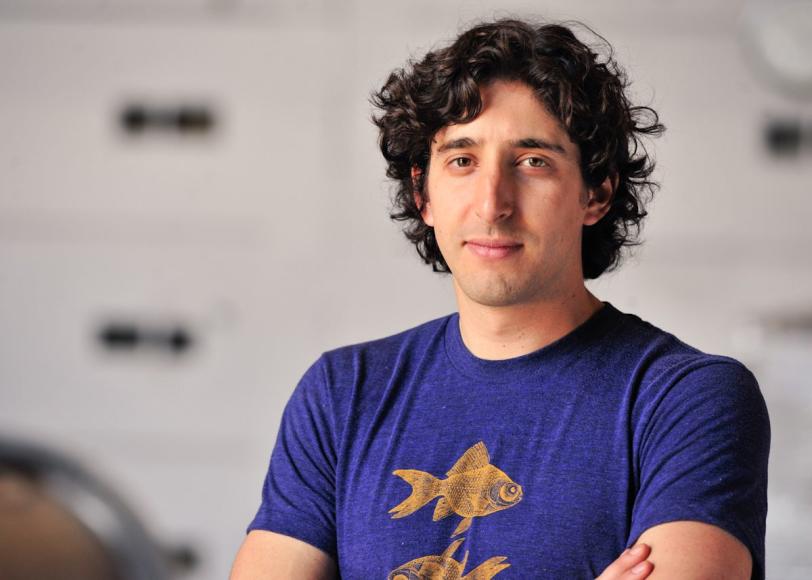Physics Society Honors Beam Physicist for 'Outstanding' Doctoral Thesis
SLAC’s Daniel Ratner will be honored with the Outstanding Doctoral Thesis Research in Beam Physics award at the American Physical Society meeting in New Orleans this week.
By Diane Rezendes Khirallah
SLAC’s Daniel Ratner will be honored with the Outstanding Doctoral Thesis Research in Beam Physics award at the American Physical Society meeting in New Orleans this week.
This year saw particularly strong competition, said Ratner’s advisor, Stanford Professor Alex Chao, who served on the judging committee but was recused from judging or commenting on Ratner’s work. He said of the winning dissertation: “The content is superb. I knew he was going to win.”
The two met in Chao’s Introduction to Accelerator Physics course at Stanford, where he remembers Ratner asking good questions. Later, as their collaboration began, Chao assumed his protégé would complete his thesis much faster than the norm because he was so bright. It soon became clear it would take longer.
“He’s got ideas coming all the time,” Chao said. “Often when we’re talking about one thing, he’ll say, ‘Hey, how about that [other idea]?’” and they end up in side discussions.
Chao, who says he happily suffers the same penchant for lateral thinking – a boon to new ideas, but a challenge to finishing a piece of work – kept giving him more time to finish, but finally “drew the line and said, ‘Absolutely no more topics. You must finish.’”
Ratner, on the other hand, was in no particular hurry. “A Ph.D. is very stressful if you don’t know you’re going to graduate. Once I realized I was going to graduate, it became very low stress. Alex was trying to kick me out for awhile, but I was holding on by my fingernails.” He laughed. “Alex would call it unfocused. I like being free to work on what I want to work on.”
In the end, Ratner’s thesis took five and a half years to complete. His topic was microbunching – the formation of tiny bunches of electrons within comparatively much larger bunches traveling in a particle accelerator. These can form accidentally, as when electrons push themselves into random spikes, or purposefully, as in the self-organization that makes a free-electron laser like SLAC’s Linac Coherent Light Source (LCLS) so powerful.
As accomplished as he is in beam physics, Ratner has a wide range of other interests. Although “he pushes himself very hard, he’s very modest,” said long-time friend Melinda Lee, SLAC’s community relations manager. “He won’t be the one to let you know he’s a pianist, a competitive squash player, or that he can create beautiful works of pottery.”
His sense of the aesthetic shows up in the fresh flowers he buys for his home, as well as in a strong sense of personal style. He’s also a sought-after SLAC tour guide, particularly for VIP tours, Lee said.
Ratner acknowledges a certain restlessness that keeps him scanning his horizons. While an undergraduate at Harvard College, he worked at the Fogg Art Museum doing scientific research for art preservation. Following graduation, he did similar work at MoMA in New York. But after a year and a half, he wanted to do something new, which brought him back to Stanford and SLAC for graduate studies in physics and work on the LCLS.
He has accepted a position as an associate staff scientist at SLAC, working on LCLS. The art world and physics remain closely connected for Ratner, he said, and “there’s still a possibility I’ll try to merge the two.”
View previous recipients of this award, first conferred in 1991. SLAC recipients include Tor Raubenheimer, Zhirong Huang, Shyam Prabhakar, Boris Podobedov, Dmitry Teytelman, and, most recently, Ian Blumenfeld.

(Photo by Matt Beardsley)